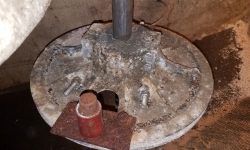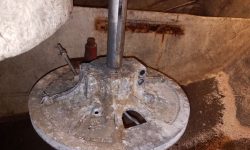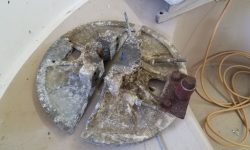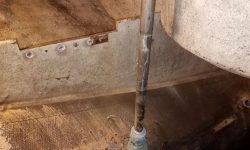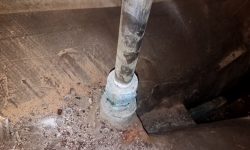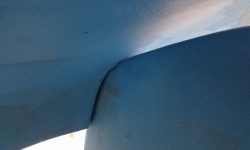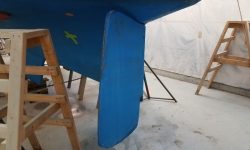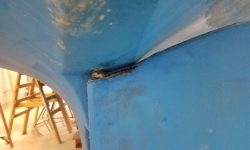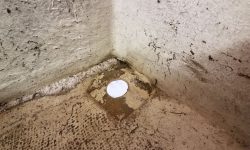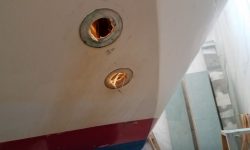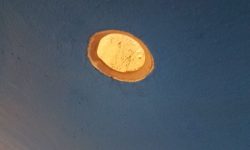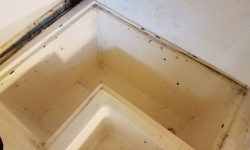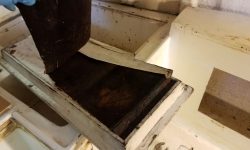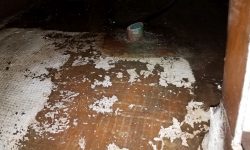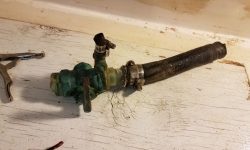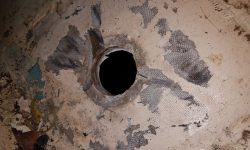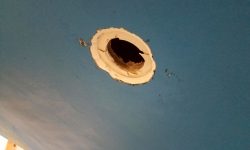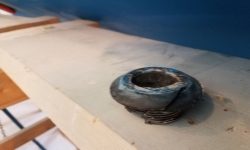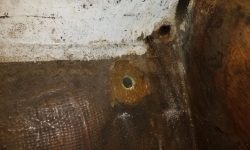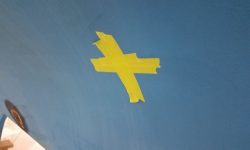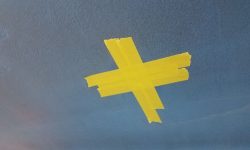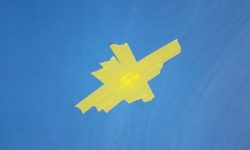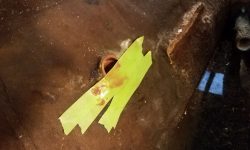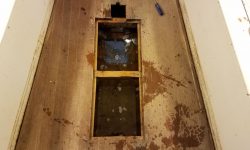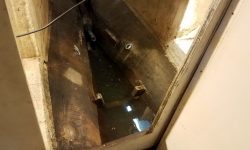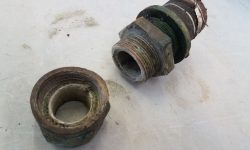March 28, 2018
Scupper 16
Wednesday
Continuing with the removal of the old steering system, I turned to the quadrant bolted to the rudder shaft. This was held in place with a machined keyway, and the two-piece aluminum quadrant was secured together with four machine bolts plus two through bolts. Fortunately, all six bolts came out without major effort, releasing the quadrant. The key was well stuck to the quadrant and came out on its own. I sprayed some penetrating oil on the stuffing box nuts to let them soak for a while so I could eventually service the packing and/or drop the rudder for some needed repairs.
The lack of proper rudder stops (as I mentioned earlier, the rudder stop assembly I recently removed had been installed apparently upside down) was directly responsible for the damage at the top edge of the rudder, since the rudder, even with the pedestal steering, could be turned too far to each side. This caused the rudder to hit the hull at its inward edge, causing, over time, the damage seen to the top of the rudder blade. I’d have to install some sort of proper stop system for the new tiller-driven steering later, and hoped to drop the rudder at least partially out in order to effect the repairs to the top of the blade. All this to be determined in due course.
Since I was in the cockpit lockers anyway, I finished up the removal of several through hulls, including the engine exhaust and bilge outlets and yet another transducer. I’d already cut off the tops of these fittings, but now I worked to remove the remainders and the backing plates, when installed.
I drained the icebox of its moldering contents, and quickly cleaned up the interior a bit. The two icebox lids were beyond salvage, full of disgusting moldy saturated wood and foam, and I threw them away rather than worry about attempting to rebuild them, as their construction was hardly worth emulating anyway.
Meanwhile, I removed the galley sink drain through hull, a small through hull from the engine room, and yet another transducer located beneath the port settee in the main cabin. I’d patch all these openings later once I got into the repair stage of the project.
The cockpit scuppers and galley sink drains featured bronze mushrooms and that were fiberglassed to the hull from within. The easiest way to remove these fittings was to drill them out with a hole saw, but first I needed a way to center the bit in the opening. To this end, I masked over the outsides of the openings, then filled inside with a thickened epoxy mixture, leaving it to cure. This only had to provide a solid-enough plug for starting the hole saw once cured. My epoxy was a little looser than I’d planned and wanted to run out of the steeply-angled scupper fittings, but a little masking tape helped stem the flow.
In the main cabin bilge, I wiped out as much gunk and chunks as possible, then decided to add cleaner and soak the bilge for a couple days, hoping to loosen the accumulated grime. The detergent didn’t suds as much as I’d expected, but with some agitation on and off during the rest of the week the soak might have a positive impact.
Finally, I disassembled the propeller shaft stuffing box, which I’d removed with the shaft still stuck inside earlier, and tossed the remnants of the shaft. I expected to clean up and re-use the stuffing box assembly later.
With most disassembly chores now behind me and at a logical stopping point for the moment, I decided to grab the opportunity afforded by better-than-expected weather outside to work on an ongoing mast project and enjoy the fine spring-like conditions for the remainder of the afternoon.
Total time billed on this job today: 4.75 hours
0600 Weather Observation: 32°, cloudy. Forecast for the day: Rain or snow shower, then mainly cloudy, 40s (it ended up being sunny and mid-50s in the afternoon)



